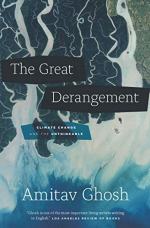|
This section contains 1,532 words (approx. 4 pages at 400 words per page) |

|
Summary
In Section 9, Ghosh recalls writing his 2004 novel The Hungry Tide, which features a tsunami. Shortly after it was published, a real tsunami hit the tip of Sumatra (Indonesia). Ghosh visited the Andaman and Nicobar Islands to investigate the damage and write an article about the event. On the Nicobars he noticed that the indigenous residents lived in the interior, while the coasts were occupied by the homes of wealthier residents from the mainland. Thus the homes of the wealthy received the most damage. Ghosh notes that earlier in human history, people were much less likely to build their settlements right next to the water. Coastal building did not become a major trend until the 17th century.
In section 10, Ghosh explains that both Mumbai and New York are coastal cities associated with the British Empire in the 1660s. The territory that became...
(read more from the Part I, Sections 9 -14 Summary)
|
This section contains 1,532 words (approx. 4 pages at 400 words per page) |

|




